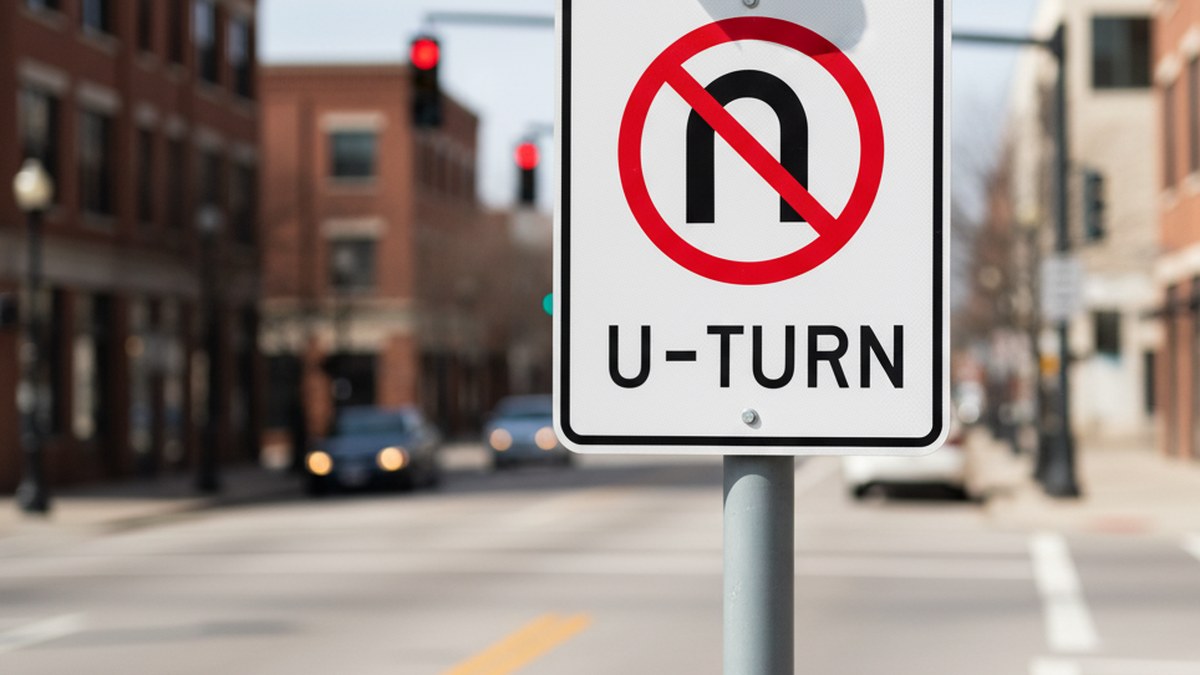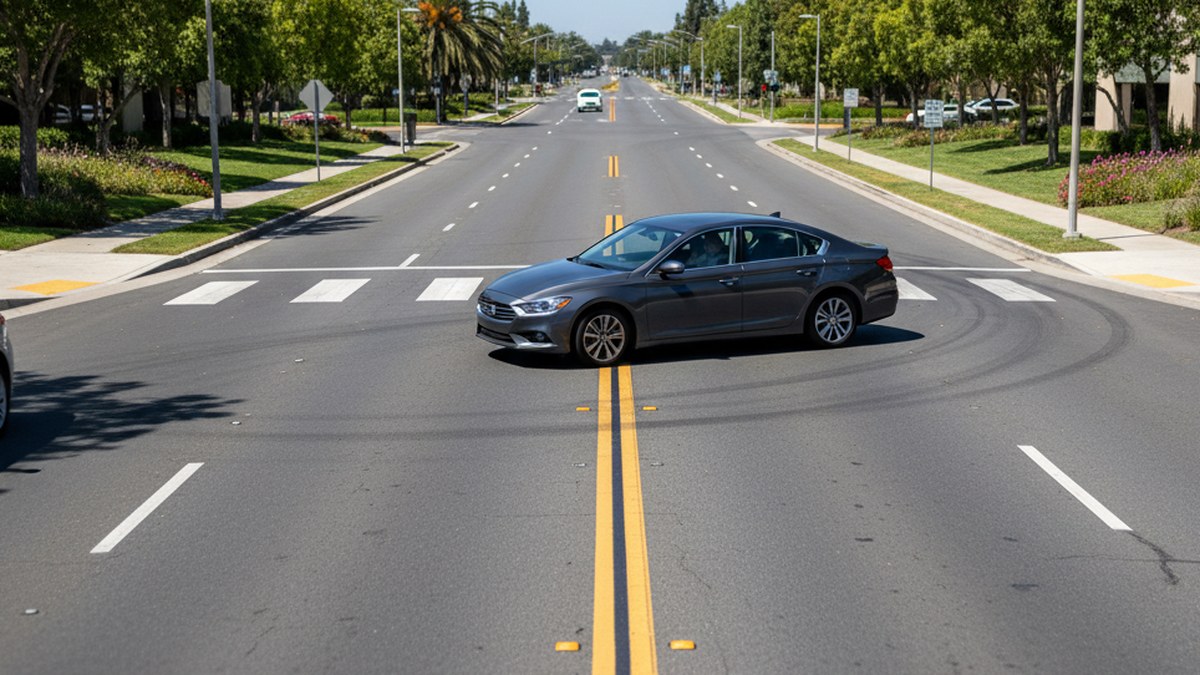Drivers frequently ask a deceptively simple question: "Can I make a U-turn across a double yellow line?" The short answer is: sometimes—if your state allows U-turns under specific conditions and the roadway is marked with a standard double yellow, not a double-double yellow (painted median barrier). Because statutes vary, the safest approach is to understand the core ideas that states share: visibility, location, signage, and the special rule for painted medians. Below is a practical, plain-English guide you can apply anywhere in the U.S., with internal links to deeper state pages and diagrams.
Where a U-turn across double yellow is legal (with conditions)
Many jurisdictions permit a U-turn across a standard double yellow centerline when the maneuver can be completed safely without interfering with oncoming traffic. States that allow this typically require the driver to yield to pedestrians in crosswalks, ensure a long, unobstructed view ahead, and avoid locations specifically called out as hazardous. If your roadway has a driveway, a business entrance, or an unsignalized intersection, a safe U-turn across the double yellow may be permitted when no sign prohibits it.
Visibility and minimum distance requirements
"Adequate visibility" is the backbone of U-turn law. Though the exact numbers differ, the intent is consistent: you must see far enough to complete the U-turn without forcing an oncoming driver to brake. On open suburban roads, that usually means hundreds of feet of clear sight distance. On urban grids you may have less—but you still must be able to turn, accelerate, and re-enter your lane without creating a hazard.
Hills, curves, and school zones
Nearly all states ban U-turns where visibility is naturally limited: the crest of a hill, on a blind curve, or within signed school-zone approaches during active hours. Even if the centerline is only a standard double yellow, a U-turn in these zones is typically unlawful because a car may appear suddenly with no time to react.
Pedestrian and cyclist right-of-way before a U-turn
The duty to yield is absolute. If a pedestrian has stepped off the curb, or a cyclist is approaching the intersection, wait. Turning the front wheels while waiting is a common mistake that invites a rear-end push into the opposing lane. Keep the wheels straight until you commit to the U-turn and the gap is fully safe.
Instructor tips: wheel alignment and gap selection
- Signal early, scan mirrors, and check the near-side crosswalk a second time before moving.
- Judge not just the nearest car, but the closing speed of the next two vehicles in the stream.
- Keep wheels straight while waiting; align your arc so you finish within your lane without straddling the centerline.
Driveways, business entrances, and unsignalized intersections
Many drivers complete legal U-turns by using a driveway or an unsignalized side street as the pivot point. That approach is lawful in states that permit U-turns across double yellow when a safe gap exists and traffic is not impeded. Do not block the centerline while waiting; if the gap is not imminent, keep your vehicle within your lane and let through-traffic pass.
Special case: double-double yellow (painted median barrier)
California popularized the "double-double yellow" — two sets of double yellow lines that create a painted median barrier. Crossing this marking is prohibited except at a designated opening. Other states use similar markings with the same intent: treat the area as a median that you must not cross. For a diagram and examples, see two sets of double yellow: median barrier rules.
When a U-turn on double yellow is prohibited
Even where U-turns are generally permitted, there are locations and conditions that turn a legal maneuver into a citation. Understanding the "always prohibited" list saves tickets and danger.
Time-based and arrow-specific "NO U-TURN" signage

A posted NO U-TURN sign overrides centerline markings. Modern plaques add time windows (e.g., 7–9 AM, 4–6 PM) or arrow-specific prohibitions (e.g., applies only to the protected left-turn arrow phase). If a sign is present—permanent or temporary—obey it even if visibility looks excellent.
Typical citation language for illegal U-turns
Summons language often reads like: "Performed U-turn where prohibited by sign," "U-turn on curve/crest," or "Crossed double-double yellow painted median." Officers may also cite failure to yield when the turn forced another driver to brake. If you received a ticket, the code section usually references U-turn restrictions, centerline rules, or median barriers specific to your state.
Camera enforcement and common ticket mistakes
While red-light cameras usually target straight-through or right-on-red violations, some jurisdictions capture U-turns made on a red arrow or against posted signs. Common pitfalls include creeping into a crosswalk before turning, failing to stop during a prohibited time window, or swinging too wide and entering the wrong lane.
How to make a safe, legal U-turn step-by-step
Treat every U-turn as a planned maneuver. The checklist below mirrors what driving examiners look for and what crash data suggests prevents conflicts.
- Confirm legality. Check for "NO U-TURN" signs, double-double yellow medians, or lane-use arrows that forbid the movement.
- Scan for pedestrians/cyclists. Look near-side and far-side crosswalks; yield completely.
- Signal early and select a gap. Judge closing speed of oncoming traffic; avoid forcing braking.
- Wheels straight while waiting. Prevent a rear-end push across the centerline.
- Turn briskly, finish in your lane. Do not straddle the centerline or cut across multiple lanes.
- Re-check mirrors. Resume speed only when fully merged and lanes are clear.
For state-specific nuances, see New York double yellow line rules and Florida §316.0875 no-passing and U-turn notes. If your route uses a painted median barrier, study double-double yellow (no opening) vs designated openings.
Quick answers: U-turn across double yellow (FAQ)
Is a U-turn across double yellow legal everywhere?
No. Many states allow it with visibility and location limits; others restrict it more tightly in urban cores.
Can I U-turn over a double-double yellow?
Generally no—treat it like a median barrier and cross only at designated openings.
What about driveways or private road entrances?
Often allowed if safe and not signed otherwise, but blocking the centerline while waiting is illegal or discouraged.
